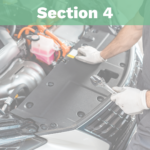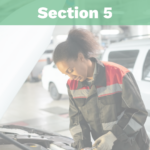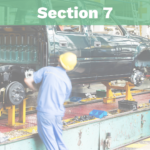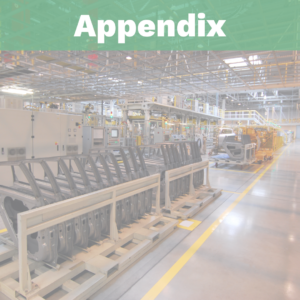Since the 1990s, Alabama has bet big on the auto industry. It has been a high-stakes effort to rebuild the state’s economy around high-wage manufacturing, raise the wages of Alabama’s workers and reduce the economic distress so prevalent across the state. A quarter–century after the first M-Class rolled off the Mercedes-Benz assembly line in Vance, subsidized by millions of dollars in taxpayer incentives, now is the time to evaluate how that bet turned out – who benefited and by how much.
A wheel in the ditch: Auto industry pay, conditions decline despite economic impact
Over the past decades, Alabama’s auto industry has grown rapidly and played a critical role as an engine in the state’s economic transformation. The industry employs thousands of workers and has generated glowing headlines about the ever-mounting number of cars built, sold and exported. The positive impacts on the state’s economy cannot be doubted.
Yet below the surface of rosy sales numbers and flattering media stories, Alabama’s auto industry is asleep at the wheel in one crucial arena: equitably compensating the workers employed in the state’s auto plants and suppliers. Despite record sales and profits, the state’s auto employers’ policies and practices are falling short regarding their workers – and Alabama more broadly – in the following ways:
- Pay has declined across the board, despite significant profits in most years. Alabama’s autoworkers are earning significantly lower pay (when adjusted for inflation) than they did 20 years ago. Their pay is also below the current national average for autoworkers across the country. Meanwhile, the state’s auto plants are earning billions of dollars in profits that aren’t being adequately shared with workers every year.
- Shocking gaps in pay persist across race and gender lines. Black and Hispanic workers are earning significantly less than white workers, and women are earning less than men. This is mostly due to women and workers of color being siloed into and working disproportionately in lower-wage occupations (also known as occupational segregation).
- The ripple effects from these pay gaps and declining wages are costing Alabama’s overall economy thousands of jobs and hundreds of millions of dollars in labor income and economic growth each year.
- Working conditions on many shop floors are deteriorating. Interviews[1] with Alabamians employed at auto plants confirm recent media stories about unsafe working conditions and child labor. Interviewees also described arbitrary and unfair disciplinary practices and a tiered wage system that is holding down wages for many autoworkers.
Based on these results, it’s clear that Alabama’s big bet on auto manufacturing has only partly paid off. The industry has a wheel in the ditch as wages fall and working conditions worsen.
These problems come at a time when the auto industry’s stakes are higher than ever for Alabama’s workers, families and economy. Despite all the industry’s economic successes, Alabama’s residents continue to struggle with elevated poverty,[2] below-average household incomes[3] [4] [5] and sluggish (and often racially segregated) social mobility.[6] These shortcomings result in part from policy choices that often prioritize corporate profit and control of the workforce above workers’ well-being. Declining wages and racial and gender pay gaps starve Alabama’s autoworkers of the money they need to climb out of poverty, support local business growth and achieve upward mobility. This is doubly true for workers of color and their families, who historically have encountered barriers to participation in various societal institutions. These workers often suffer from significantly lower household incomes, lower educational attainment and lower life expectancy than their white counterparts. Better wages for workers of color would make a large difference in erasing the troubling racial gaps in economic outcomes.
Alabama’s auto industry plays an outsized role in how global businesses, investors and policymakers perceive the state. In addition, the industry’s sheer economic strength – in terms of employees, suppliers, sales and especially wages – gives the industry a powerful capacity to help address these economic challenges and reshape Alabama’s overall economy so that prosperity is more widely shared with working people.
Given the massive amount of public subsidies that Alabama’s state and local governments have given these companies since Mercedes came to town in 1993, the auto industry also has an obligation to use its power – not just to increase its own profits, but also to benefit the state more broadly. This is especially true when doing so by raising wages and improving working conditions is directly within the industry’s control. In turn, policymakers have an obligation to constituents to ensure the state’s big bet pays off for the broadest possible number of Alabama families, taxpayers and workers.
This paper aims to provide both factual background and policy suggestions to empower manufacturers and officials to address the areas where they fall short, and to contribute more fully to the prosperity and economic well-being of the people who live in Alabama and work in auto plants.
What can be done
Together with Alabama’s policymakers and organized labor (often known as unions), auto employers can ensure the state’s corporate subsidies provide a return on investment in ways that chart a better course for their workers and the entire state. Specifically:
- Employers must address three major areas where they are falling short: declining wages, pay gaps and working conditions. Employers should pay their workers at least the same as they did 20 years ago (when adjusted for inflation). They should eliminate pay disparities between men and women, as well as between white workers and workers of color. They should use targeted training and hiring programs to break down the occupational segregation that is driving many pay gaps. And they should improve safety and fairness on the shop floor.
- Policymakers must fix Alabama’s low-road economic development model. The state’s prevalent economic development model has included massive corporate giveaways from tax revenue. These incentives often lack any accountability mechanism to claw back tax expenditures given to companies that fail to meet benchmarks. Moreover, data reporting and accountability mechanisms have been inadequate to monitor the companies’ claims of job quality and worker impact. In a positive move, the state recently has begun implementing data accessibility requirements on economic development incentives.[7] This trend should continue and include further clawback mechanisms for companies that fail to perform as they promised. These accountability mechanisms should include provisions rendering companies ineligible for incentives when they violate labor law, including but not limited to use of child labor. Further, the state should prohibit companies that use the current prison labor system, which operates much like “convict leasing” programs the state historically used to extract labor from incarcerated Alabamians, from eligibility for tax incentives. The state also should disallow the use of prison labor to benefit private companies.
- Employers and policymakers must recognize organized labor as a key partner. Organized labor plays a central role in bargaining for better wages and working conditions for workers in the industry. That would be a critical step in addressing the industry’s glaring problems with declining pay and wage gaps. Perhaps most importantly, auto employers should voluntarily recognize the United Auto Workers in representing and collectively bargaining with their employees. Organized labor in 21st-century American auto plants adds massive value to employers in addition to workers and communities. Unions bring expertise to “discussions of quality, safety, predictive and preventative maintenance, workforce development, [and] team-based operations”[8] – all of which help improve the productivity and ultimately profit margins of America’s auto manufacturing companies. The auto industry receives huge subsidies, especially during the nascent large-scale transition to electric vehicle manufacturing. As recipients of massive public expenditures, manufacturers should operate in good faith with workers, in the form of their chosen unions, to hold up the companies’ end of the deal: creating good jobs with strong worker protections to benefit the people of Alabama.
How this paper is organized
This paper is organized as follows: Section 2 lays out the stakes and why it matters for Alabama’s economy that many of the state’s auto plants fall short when it comes to worker pay and working conditions. It also outlines the promise that the auto industry offered when Mercedes first came to town three decades ago. Section 3 shows the many ways the industry has lived up to the hopes of 1993 and benefited the entire state.
In the following four sections, we look at the ways the industry has fallen short: declining worker pay (Section 4), racial and gender pay gaps and occupational segregation (Section 5), the economic impacts of these pay gaps on Alabama’s GDP and labor income (Section 6), and working conditions on the shop floor (Section 7). Many of these failings can be laid at the doorstep of policymakers, as the state’s broken economic development model encourages weaker labor protections and lack of accountability from corporate employers (Section 8).
In Section 9, we explore the ways auto employers, policymakers and labor unions can partner to address these challenges around pay, working conditions and labor protections. For those interested in the technical aspects of the study, we provide an extensive description of our data sources, analytical approach and methodology in the Appendix. All earnings values in the report are presented in 2021 constant dollars.
Additional sections
 Executive summary
Executive summary
 The high stakes and big bet on Alabama’s auto industry
The high stakes and big bet on Alabama’s auto industry
 The ways the bet on auto benefited Alabama
The ways the bet on auto benefited Alabama
 A wheel in the ditch: Autoworkers see falling pay
A wheel in the ditch: Autoworkers see falling pay
 A wheel in the ditch: Pay gaps and occupational segregation
A wheel in the ditch: Pay gaps and occupational segregation
 A wheel in the ditch: Economic impact of falling wages and the pay gap
A wheel in the ditch: Economic impact of falling wages and the pay gap
 A wheel in the ditch: Working conditions worsen
A wheel in the ditch: Working conditions worsen
 The auto industry and Alabama’s low-road economic development approach
The auto industry and Alabama’s low-road economic development approach
 What we should do next
What we should do next
 Research design and methodology
Research design and methodology
[1] In-person and phone interviews were conducted by report co-author Dev Wakeley.
[2] J. Wayne Flynt, ”Poverty in Alabama,” Encyclopedia of Alabama (last updated April 26, 2023), https://encyclopediaofalabama.org/article/poverty-in-alabama (stating that based on 2019 U.S. Census data, Alabama is the seventh poorest state in the nation and contains five of the nation’s 100 poorest counties).
[3] Encyclopædia Britannica, “Economy of Alabama,” https://www.britannica.com/place/Alabama-state/Economy.
[4] U.S. Census Bureau, Income and Poverty in the United States: 2021, https://www.census.gov/library/publications/2022/demo/p60-276.html.
[5] U.S. Census Bureau, QuickFacts: Alabama, https://www.census.gov/quickfacts/fact/table/AL/BZA210221. Among all 50 states, Alabama’s median family income has long remained below the national average. For example, in 2021, the national annual median household income was approximately $71,000. But in Alabama, it was just under $55,000.
[6] Pew Charitable Trusts, “Economic Mobility of the States” (April 2, 2012), https://www.pewtrusts.org/en/research-and-analysis/reports/0001/01/01/economic-mobility-of-the-states.
[7] Patricia Todd & Kasia Tarczynska, “Alabama’s new transparency law is a step in the right direction, but more needs to be done,” Alabama Reflector (June 9, 2023), https://alabamareflector.com/2023/06/09/alabamas-new-transparency-law-is-a-step-in-the-right-direction-but-more-needs-to-be-done.
[8] Joseph B. Atkins, Covering for the Bosses: Labor and the Southern Press, University Press of Mississippi: Oxford (2008), https://books.google.com/books?id=o6AfWT79t2MC&printsec=frontcover (stating that though the textile industry invested heavily in the South following World War II, globalization eventually led to many textile industries leaving the South and the country for cheaper labor elsewhere).



